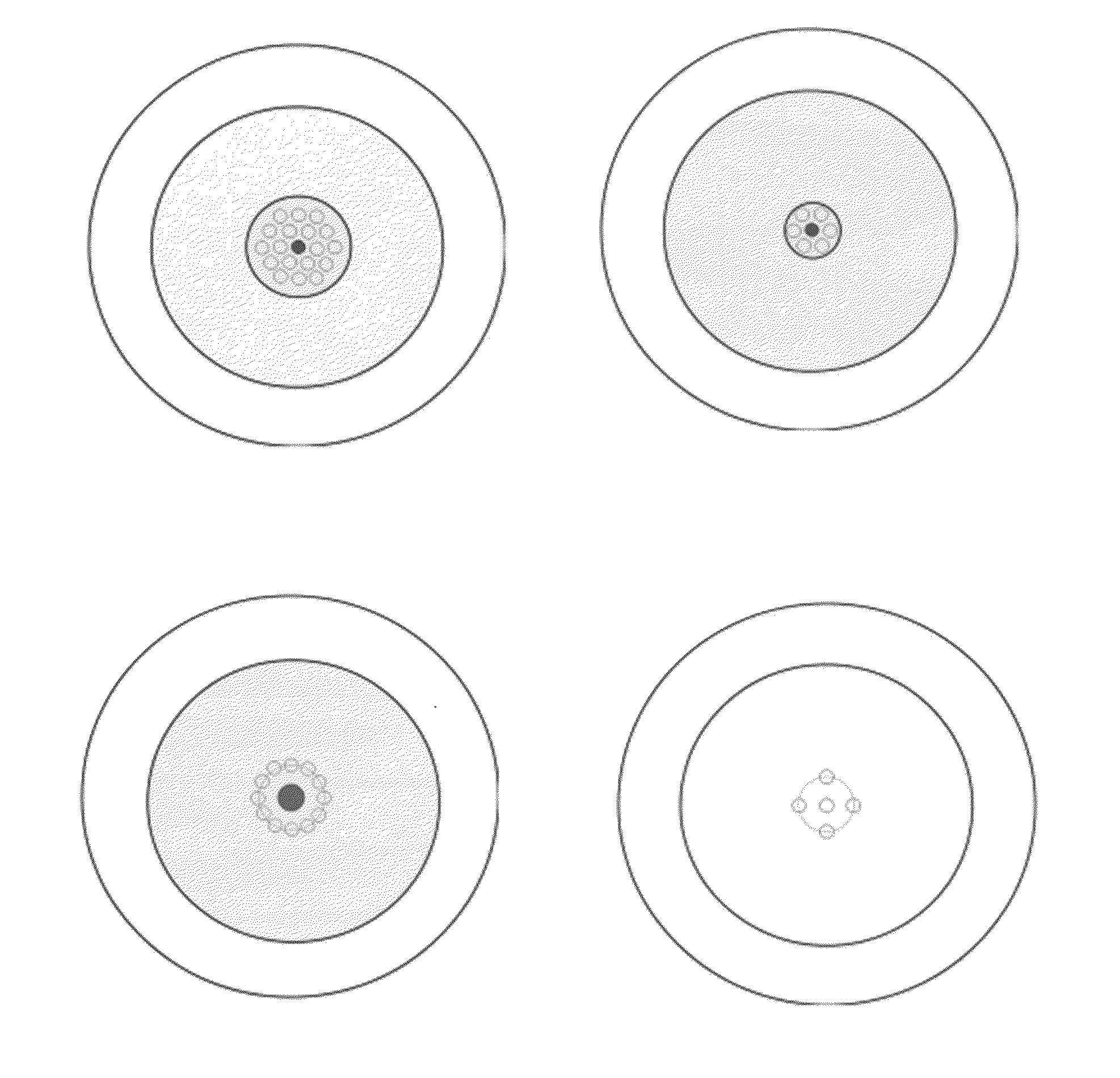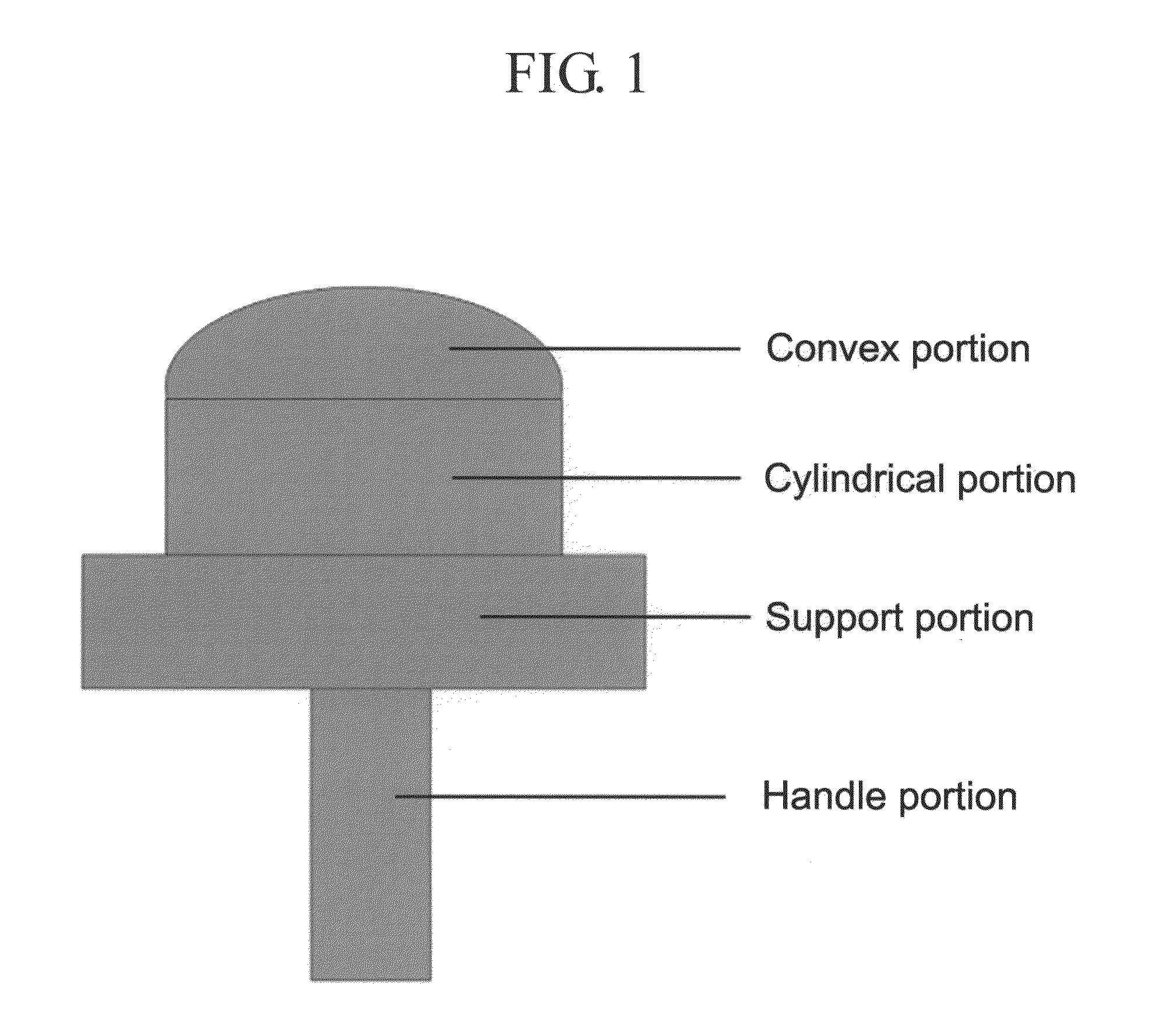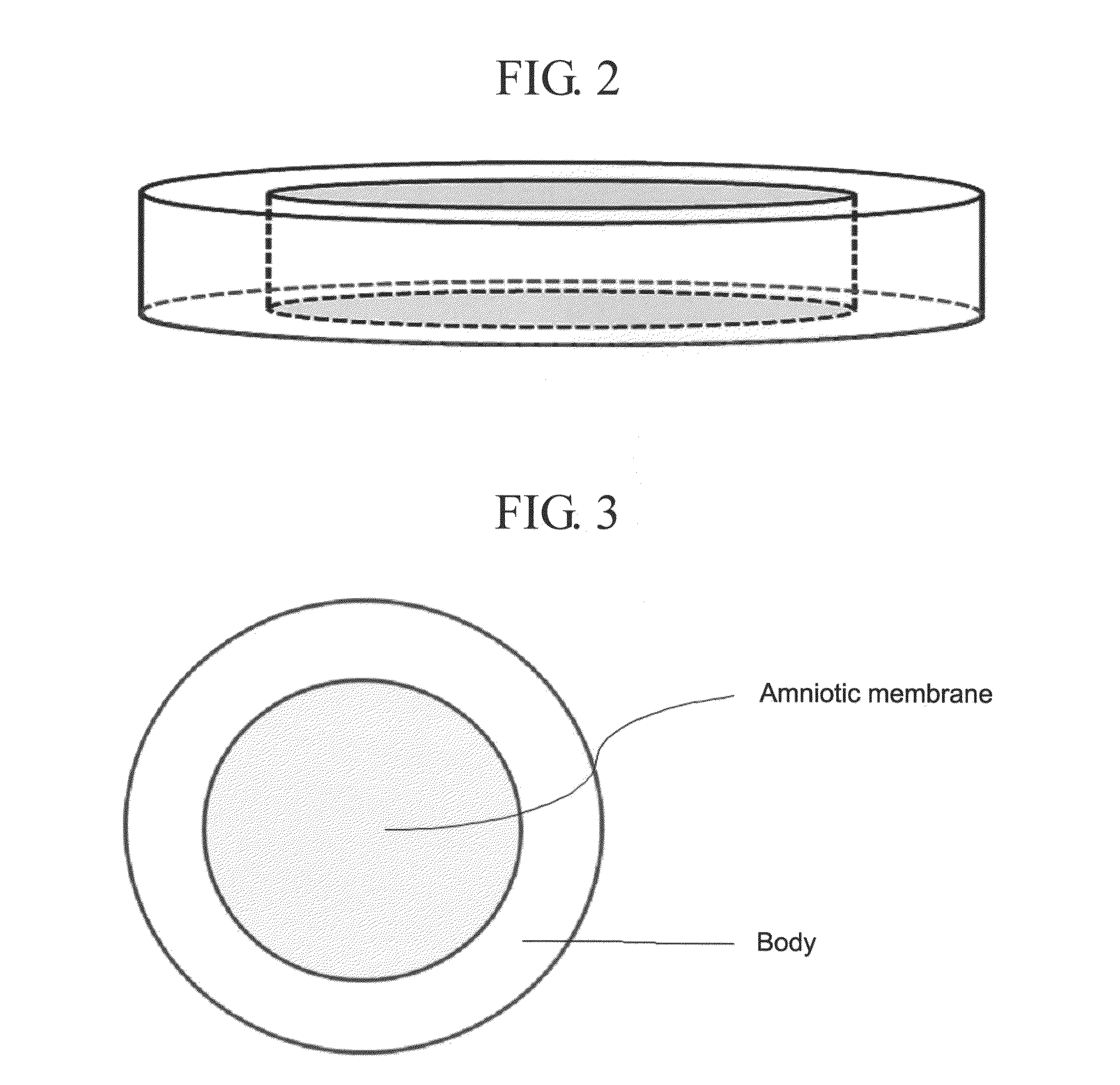Method for preparing contact lens-shaped amniotic dressing
a technology of amniotic dressing and contact lens, which is applied in the field of preparing amniotic dressing with contact lens, can solve the problems of insatisfactory conditions, inconvenient patient treatment, and method using amniotic membran
- Summary
- Abstract
- Description
- Claims
- Application Information
AI Technical Summary
Benefits of technology
Problems solved by technology
Method used
Image
Examples
example 1
Preparation of an Amniotic Membrane
(1-1) Preparation of Human Amniotic Membrane
Human amniotic membrane was treated by the method disclosed by an article of Kim and Tseng (Kim J C and Tseng S C, Cornea, 14:473-84 (1995)). An amniotic membrane was isolated from the placenta of a pregnant who had taken Caesarean section. The pregnants had been prescreened for hepatitis B and C viruses, HIV and syphilis, and only those placentas of which the maternal bloods reveal negative serological results were used. The amniotic membrane thus obtained was washed sequentially several times with sterile saline solution and sodium hypochlorite, and washed repeatedly with purified water. The resulting membrane was stored under a cold condition (2˜8° C.) until used.
(1-2) Preparation of Bovine Amniotic Membrane
Bovine amniotic membrane was treated by the following procedure. The bovine placenta was obtained upon delivery, and the amniotic membrane was separated therefrom and washed several times with salin...
example 2
Preparation of a Mold and a Ring
A mold for forming a contact lens-shaped amniotic membrane and a ring (or “O-ring”) for contacting an amniotic membrane with the mold were manufactured as shown in FIGS. 1 and 2. The mold was composed of a cylindrical portion having a diameter of 14 mm, a convex portion having a base curve of 8.4 to 8.8 mm, a support portion, and a handle portion. The support portion comprises a support which supports the ring used for contacting and fastening the amniotic membrane, and the handle portion has a cylindrical shape connected to the middle of the bottom surface of the support portion. The mold was made of an acetal resin. The O-ring of FIG. 2 was manufactured to fit the respective mold having a specific base curve. The O-ring was made of Teflon (14.1 mm internal diameter) or a perfluoroelastomer (12 mm internal diameter).
example 3
Arrangement of the Amniotic Membrane
In order to make the amniotic membrane obtained in (1-1) to (1-3) have a contact lens-shape, the amniotic membrane was brought in contact with the contact lens-shaped mold obtained in Example 2, and then fixed on the mold with the O-ring.
Specifically, the amniotic membrane was cut to the size of the mold, and then was brought in contact with the convex portion of the mold (FIG. 1) with its epithelial layer facing downwards. In case of overlapping the amniotic membrane, the last amniotic membrane was overlapped so that its epithelial layer faced outside. The O-ring (FIG. 2) was placed thereafter on the amniotic membrane or overlapping amniotic membranes to completely cover the mold, followed by natural drying, freeze drying, or vacuum drying in a clean bench. A top perspective view of the dried amniotic membrane (including the mold) is shown in FIG. 3.
PUM
| Property | Measurement | Unit |
|---|---|---|
| Diameter | aaaaa | aaaaa |
| Diameter | aaaaa | aaaaa |
| Diameter | aaaaa | aaaaa |
Abstract
Description
Claims
Application Information
 Login to View More
Login to View More - R&D
- Intellectual Property
- Life Sciences
- Materials
- Tech Scout
- Unparalleled Data Quality
- Higher Quality Content
- 60% Fewer Hallucinations
Browse by: Latest US Patents, China's latest patents, Technical Efficacy Thesaurus, Application Domain, Technology Topic, Popular Technical Reports.
© 2025 PatSnap. All rights reserved.Legal|Privacy policy|Modern Slavery Act Transparency Statement|Sitemap|About US| Contact US: help@patsnap.com



